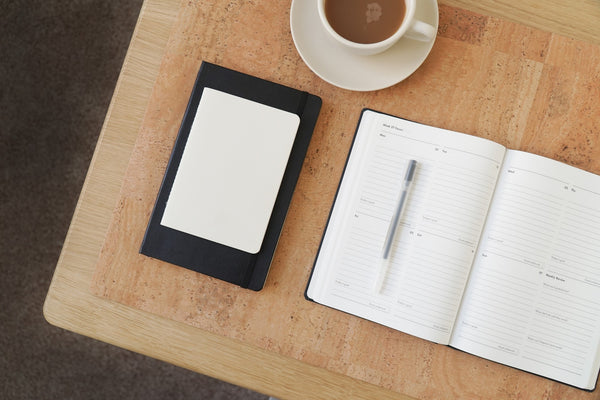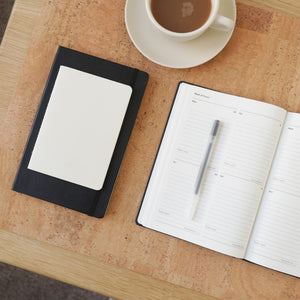5 ways to create a minimalist workspace to boost mental wellbeing
Aug 06, 2020

Tidy desk, tidy mind. It’s a phrase we’ve all heard many times before. But is it really true? How does the way we design our workspace affect our mood and productivity? And how do you make it more minimalist? We’ve put together some handy tips to help you declutter and feel that little bit more mindful.
Experts agree that creating a calm and tidy workspace can help boost creativity and allow you to focus on what’s important. According to Joshua Becker, author of “The Minimalist Home”, a minimalist workspace gives you the freedom to choose your own projects. He explains: “Your to-do list is not held captive by the folders on your desk. It is determined by you.”
So what are the steps towards achieving this?
1. Make it work for you - The first step is to evaluate your workspace and decide how you want to use it. Matthew Encina, designer and Creative Director at thefutur, has developed a handy three-pronged organisation method - ‘function, flow, familiarity’ which he says will help you create a more intuitive workspace. The trick, he explains, is to know instinctively where things go because you have given them a proper home. Watch his YouTube video for more tips.
To get started, he recommends doing an audit of your daily workflow to understand what’s important. This involves noting down what you do everyday at work, and thinking about the tools you use most often and need to have easily accessible.
2. Reduce, remove & recycle - Step two is the difficult one - getting rid of stuff! We draw inspiration from Marie Kondo and her “spark joy” method. It involves removing everything from your desk, and then grouping items together into categories such as books, paper, pens and personal items.
Once you have all your items organised into groups, you can then evaluate each object individually and decide whether or not it makes you feel good about your work. If not, thank the object and remove it. This is also a great opportunity to recycle, give to friends or donate to charity.

3. Get creative! - Now that you’ve removed some of the clutter and prioritised what you need, you can start designing the space to work for you. We recommend storing items such as books upright rather than stacking them into piles. For papers, make use of magazine files, and label the spine so you can scan them easily and avoid an unwieldy in-tray.
Resist the temptation to stuff things into drawers haphazardly, and instead use small trays and boxes to compartmentalise items so you can retrieve them more easily. Prioritise the top drawer for the things you use most often, and work your way down in order of importance.
4. Soothe with texture and touch - Achieving a more mindful space isn’t only about decluttering, it’s also about creating a space that allows for contemplation and relaxation. Try to incorporate tactile, earthy materials such as cork, wood and stone as these can help reduce stress and reinforce a connection with the natural world.
Why not also make space for greenery, however small? Work environments with plants and foliage have been proven to reduce stress levels and promote wellbeing. Including a small plant on your desk or shelf area is a great way to increase oxygen levels and boost your mood as your work.
5. Let there be light - Last but not least, lighting. Perhaps one of the most overlooked elements but also the most important when it comes to making your workspace more mindful. Always prioritise natural lighting whenever possible as sunlight is mood enhancing, and prevents you having to strain your eyes under the glare of overhead lights.
As the sun fades, complement natural light with soft, diffuse light to illuminate the room around you without causing glare or shadows. A good option here is to invest in task lamps for computer work and upward shining floor lamps or accent lights hidden in bookshelves to create a soft glow across your workspace.
We’d love to hear your tips on creating a minimalist and mindful workspace. Share your story with us on Instagram @BU_Lifestyle.

